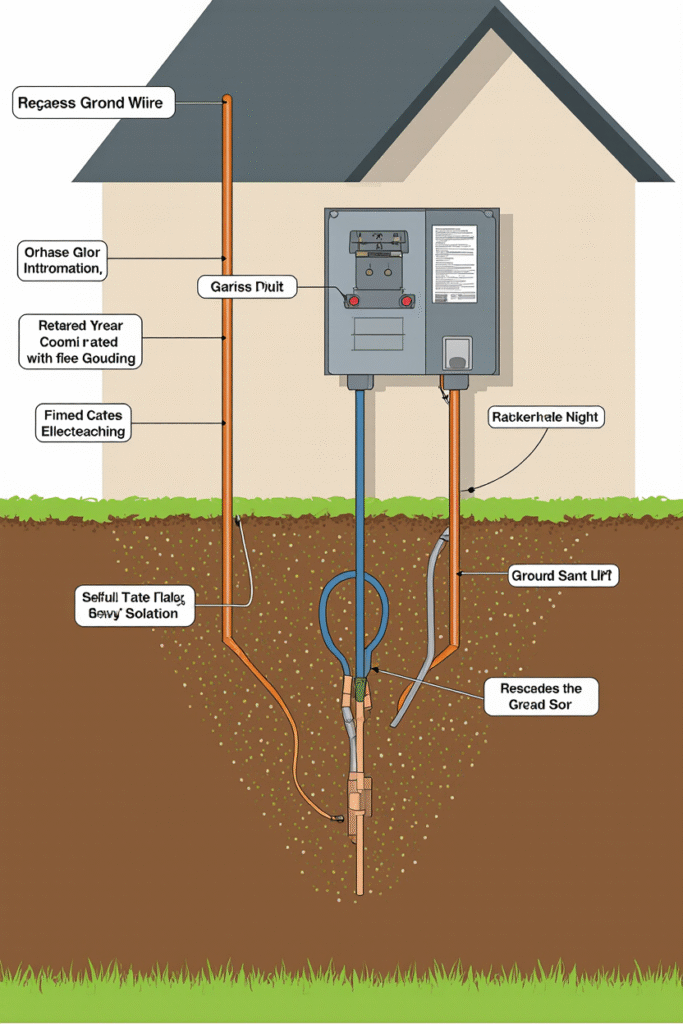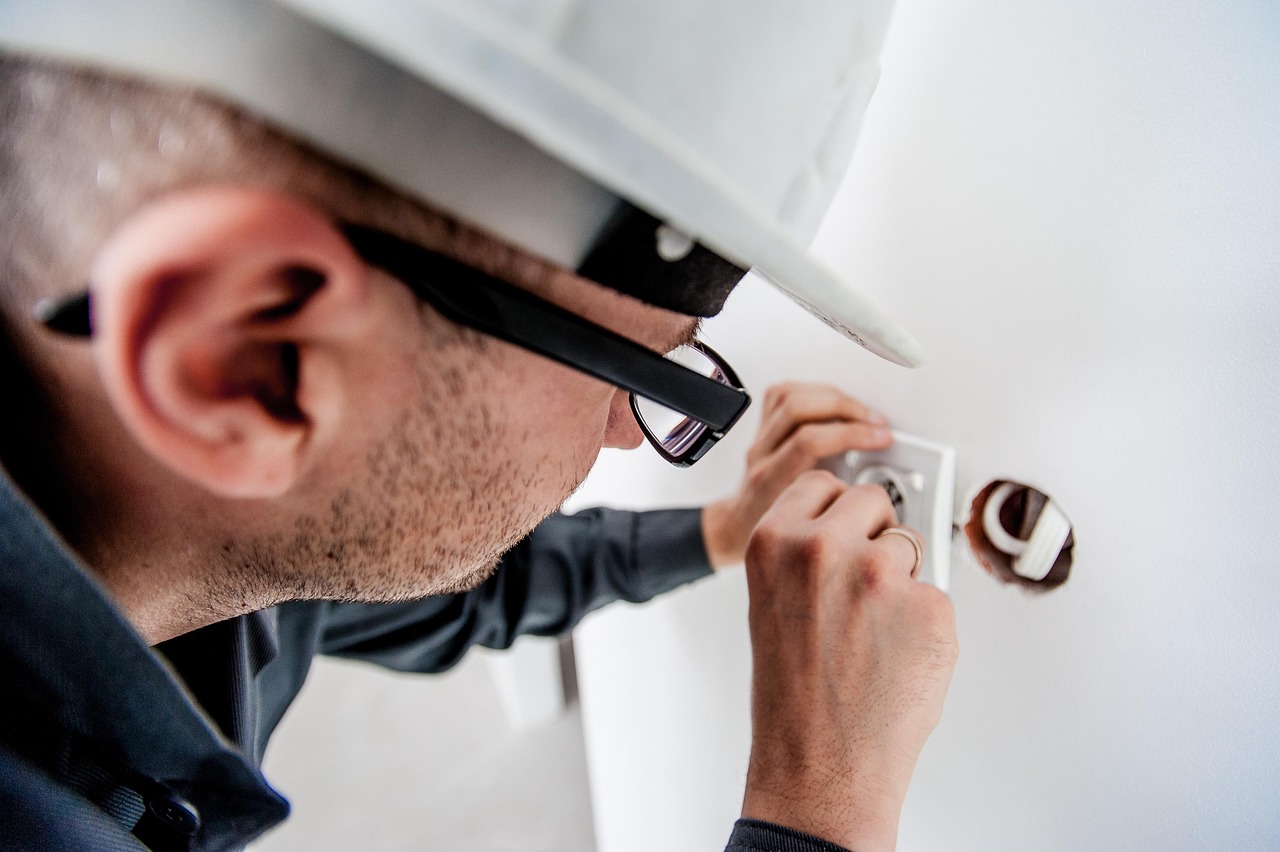The ground protects lives
A Silent Guardian in Your Walls
Have you ever flipped on a light switch or plugged in your phone without a second thought? That everyday comfort is possible because of an invisible protector working behind the scenes: the grounding system in your home.
Electrical grounding is not just a technical necessity — it’s a life-saving feature embedded deep within your walls. When something goes wrong, grounding can mean the difference between a simple inconvenience and a catastrophic accident. If you’re a homeowner, renter, or DIY enthusiast, understanding how the ground protects lives is crucial to your safety and peace of mind.
Let’s dive into what grounding actually is, how it works, and how you can ensure your home is properly grounded.
Table of Contents
What is Grounding in Domestic Electrical Installations?
Electrical grounding (also known as earthing) is the process of connecting parts of an electrical system directly to the earth. This is done using a low-resistance path to allow excess or fault current to safely dissipate into the ground.
Why Your Home Needs Grounding
- Prevents electrical shock by redirecting stray current
- Reduces fire risks caused by short circuits or surge damage
- Protects electronic appliances from voltage spikes
- Enables circuit breakers to trip during faults, preventing worse damage
Without grounding, you’re one loose wire away from potentially dangerous exposure to high voltage.
The Dangers of an Ungrounded Electrical System
You might assume your home is already grounded, especially if it’s newer. But many older homes still rely on outdated systems that lack proper grounding or have degraded over time.
Real-Life Hazards from Missing or Faulty Grounding
- Electric shocks from touching metal appliances
- House fires due to unchecked surges or faults
- Permanent damage to TVs, computers, refrigerators, and other sensitive electronics
These aren’t hypotheticals — incidents caused by faulty or missing grounding are documented in reports by the U.S. Consumer Product Safety Commission (CPSC) and NFPA (National Fire Protection Association).
Signs Your Home May Not Be Properly Grounded
- Outlets with only two prongs
- Frequent circuit breaker trips or blown fuses
- Buzzing, sparking, or warm electrical outlets
- Tingling sensation when touching appliances
If you notice any of these red flags, it’s time for a grounding inspection.
Key Components of a Grounding System in Your Home
Grounding isn’t a single wire or device — it’s an integrated system that functions together to keep you safe. Here are the main parts:

Major Grounding Components
- Ground Rod: A long copper or steel rod driven into the soil near your home. It acts as the anchor point for stray electrical energy.
- Ground Wire: Also called the grounding electrode conductor, this wire connects your electrical panel to the ground rod.
- Ground Bus Bar: Located in your service panel, it routes all grounding connections within the home.
- Bonding: This ensures all metallic surfaces (like water pipes or metal junction boxes) are electrically connected so no stray voltage remains.
How the System Works Together
Think of electricity as water: it always takes the path of least resistance. Grounding ensures that any errant or fault current has a safer, easier path to escape into the earth rather than flowing through your body or your electronics.
Grounding Standards and Best Practices
Proper grounding isn’t optional. It’s required by electrical codes and is a must for any safe installation.
NEC Grounding Requirements (U.S. Based)
- Ground rods must be at least 8 feet long
- Resistance must be below 25 ohms
- All metallic systems (gas, water pipes, etc.) must be bonded
- All major appliances must be grounded
When to DIY and When to Hire a Pro
DIY grounding is possible, but risky unless you’re very experienced. Improper grounding can:
- Make your entire electrical system unstable
- Cause electrical shocks
- Void insurance or home warranty policies
Unless you’re upgrading outlets or replacing fixtures, grounding is a job best left to a licensed electrician.
How to Know If Your Home Is Properly Grounded
Even if everything « seems fine, » it’s smart to verify your grounding system, especially in older homes or during renovations.
Simple DIY Checks
- Use a three-prong outlet tester to detect grounding and polarity issues.
- Inspect your main service panel: there should be a bonded ground bar with a visible ground wire.
- Look for GFCI outlets (Ground Fault Circuit Interrupters) in kitchens, bathrooms, and garages.
When to Call a Licensed Electrician
- Your home was built before 1975 (many weren’t grounded back then)
- You’re adding major appliances or renovating
- Outlets are warm or tingle when touched
- You suspect tampering or poor DIY work by previous owners
A professional will perform a continuity test and inspect your grounding electrode and bonding connections.
FAQ – How the Ground Protects Lives
Why is grounding essential in domestic electrical installations?
It offers a safe escape route for excess or fault current, shielding you from shock, fire, and damage.
Can a house function without grounding?
Yes, but it’s extremely dangerous and usually violates code. You might not know something’s wrong until it’s too late.
How can I tell if my house has grounding?
Use a socket tester or hire an electrician for a full inspection. Older homes are especially at risk.
Does grounding affect my electricity bill?
No, grounding does not consume electricity. It only activates in fault or surge conditions.
What happens if I touch a live wire in a grounded vs. ungrounded system?
In a grounded system, the breaker trips immediately. In an ungrounded one, you become the path to ground — and that’s potentially fatal.
Conclusion: Grounding Is the Unsung Hero of Electrical Safety
Every time you flip a switch or charge a device, your safety depends on something you never see: the ground.
Without it, a loose wire or short circuit could ruin your appliances, destroy your home, or even take a life. But with proper grounding, those threats are defused silently and effectively. It’s not just a code requirement — it’s a life-saving system worth understanding.
Remember: the ground protects lives. Make sure it’s doing its job in your home.


